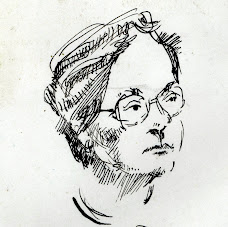As do many other people, I keep some of my Netflix queue for television series that I missed on broadcast or cable. Recently I’ve finished watching two series, and begun watching another which I’d viewed only sporadically in the past.
 I’ve read all of Ellis Peters’ Brother Cadfael series of medieval mysteries, and enjoyed a few on PBS’s Mystery! Now I’m coming back to watch the ones I missed or have forgotten. I haven’t listed them in order as I usually would, since, although there is a character arc, it isn’t so big a part of the story as to present a problem in watching out of order. The episode I watched the other day was The Potter’s Field (1998), in which a potter who has left his wife to become a monk is suspected of murdering her when her body turns up a year later.
I’ve read all of Ellis Peters’ Brother Cadfael series of medieval mysteries, and enjoyed a few on PBS’s Mystery! Now I’m coming back to watch the ones I missed or have forgotten. I haven’t listed them in order as I usually would, since, although there is a character arc, it isn’t so big a part of the story as to present a problem in watching out of order. The episode I watched the other day was The Potter’s Field (1998), in which a potter who has left his wife to become a monk is suspected of murdering her when her body turns up a year later.
I think the most interesting aspect of the Cadfael stories for me is the theme of change and transition which is present in all of them to some degree. The 12th century in England was a time of change – the Cadfael series takes place during the civil war between the forces of King Stephen and the Empress Matilda for the crown of England. In addition, the social system was changin as serfdom was becoming less common and free artisans and tradesmen gathered in towns. Returning Crusaders such as Cadfael brought their new ideas and experiences back with them. All these aspects of 12th-century life combine with each episode’s murder mystery for an entertaining and – dare I say it – educational program. I noticed that The Potter’s Field was structured almost like a modern police procedural novel, with a number of suspects, dead ends, and the puzzle solved only when Cadfael finally asks the right question.
 I said above that I had finished watching the Foyle’s War (2002) series, but just the other day I heard the welcome news that three more episodes, taking the story up to V-J Day, would be filmed soon. Of course, it will probably be some time before they are available here. It has been a fine series and deserves to reach its logical ending point. Although we sometimes found the plots a bit far-fetched, it was easy to overlook that in light of Anthony Horowitz’s talent for bringing wartime England to life on the screen. The cast, as so often in British television, was excellent, both the recurring characters and the guests. Horowitz showed both the heroic and the venal in the actions of Britons (and others) in World War II.
I said above that I had finished watching the Foyle’s War (2002) series, but just the other day I heard the welcome news that three more episodes, taking the story up to V-J Day, would be filmed soon. Of course, it will probably be some time before they are available here. It has been a fine series and deserves to reach its logical ending point. Although we sometimes found the plots a bit far-fetched, it was easy to overlook that in light of Anthony Horowitz’s talent for bringing wartime England to life on the screen. The cast, as so often in British television, was excellent, both the recurring characters and the guests. Horowitz showed both the heroic and the venal in the actions of Britons (and others) in World War II.
 The longest of these series, as it began on American TV, is Due South (1994). Canadian Paul Gross is one of my current Top 10 Favorite Actors – also producers, directors, screenwriters – he even sings! The other actors in the series, many of them also Canadian, do a great job as well. In the last several episodes, the writers and cast seemed to be having even more fun than usual – Camilla Scott as Fraser’s boss “Meg Thatcher” gets to sing gospel in one episode, for example. The two-part finale, “Call of the Wild,” wraps up a number of storylines. The real Ray Vecchio (David Marciano) returns, as does Leslie Nielsen as the flatulent Buck Frobisher. In a bit of an inside joke, Gross’s real-life wife, Martha Burns, makes a cameo appearance as the ghost of Fraser’s mother. I was happy to have had the chance to watch this series of gently humorous Ripping Yarns.
The longest of these series, as it began on American TV, is Due South (1994). Canadian Paul Gross is one of my current Top 10 Favorite Actors – also producers, directors, screenwriters – he even sings! The other actors in the series, many of them also Canadian, do a great job as well. In the last several episodes, the writers and cast seemed to be having even more fun than usual – Camilla Scott as Fraser’s boss “Meg Thatcher” gets to sing gospel in one episode, for example. The two-part finale, “Call of the Wild,” wraps up a number of storylines. The real Ray Vecchio (David Marciano) returns, as does Leslie Nielsen as the flatulent Buck Frobisher. In a bit of an inside joke, Gross’s real-life wife, Martha Burns, makes a cameo appearance as the ghost of Fraser’s mother. I was happy to have had the chance to watch this series of gently humorous Ripping Yarns.





No comments:
Post a Comment